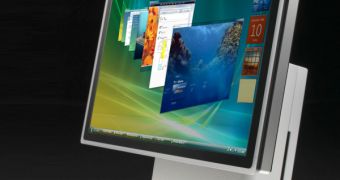Windows 1 was made available on November 20, 1985. Windows Vista was released to business customers on 30 November 2006, and to the general public on 30 January 2007. But between the two landmark operating system releases for the Redmond company there is virtually a suite of Windows sites and sounds. In this context, the video fragment embedded at the bottom of this article will illustrate the evolution of the Windows client from 1985 to 2007 by showcasing startup screens and sounds.
The 16-bits Windows 1 was intimately connected with MS-DOS and was superseded by Windows 2 two years later. Windows 2 marks an important milestone for Microsoft as the first versions of Word and Excel were supported by the product. Windows 3 was made available in May 1990, and brought to the table a completely overhauled graphical user interface being the product at the root of the success of the Windows line.
Windows 3.1 was the successor of Windows 3.0, released in March 1992, and was followed shortly by Windows NT in mid 1993. In 1995, Microsoft released Windows 95, formerly codenamed Chicago. Windows 95 introduced the basic infrastructure for the graphical user interface that has made it across all subsequent editions of the Windows platform, and even survived into the architecture of Windows Vista.
Codenamed Memphis, Windows 98 was launched in June 1998, and it is synonymous with the migration from 16-bit to 32-bit, much in the same manner as Windows Vista marks the transition from 32-bit to 64-bit architectures. Then came Windows 2000, at the beginning of 2000. Windows Millennium Edition was delivered shortly after in September 2000. And at the end of 2001, Microsoft was unveiling Windows XP.
Six years after XP the Redmond company launched its successor, Windows Vista. By the current estimates from Microsoft, the install base of Windows will hit 1 billion by mid 2008. Vista will be replaced by Windows 7, planned for availability in mid 2010.

 14 DAY TRIAL //
14 DAY TRIAL //